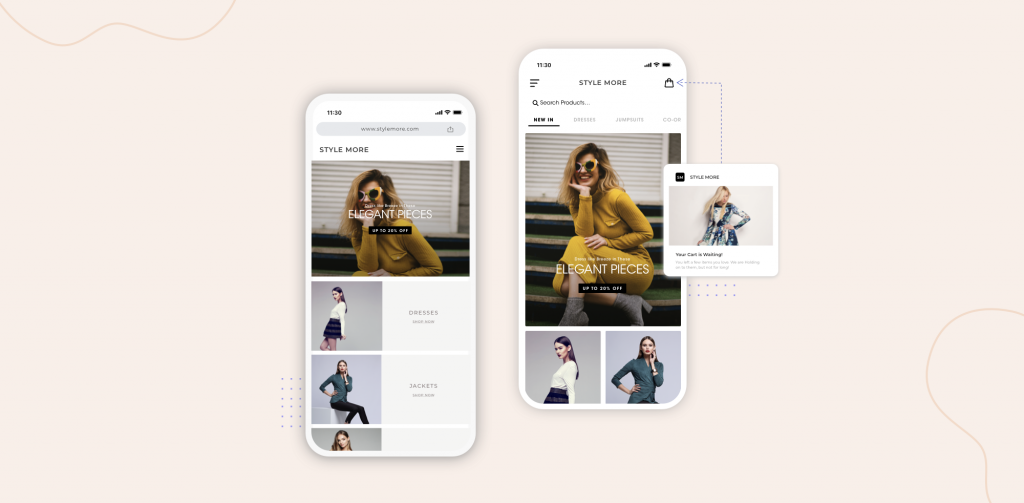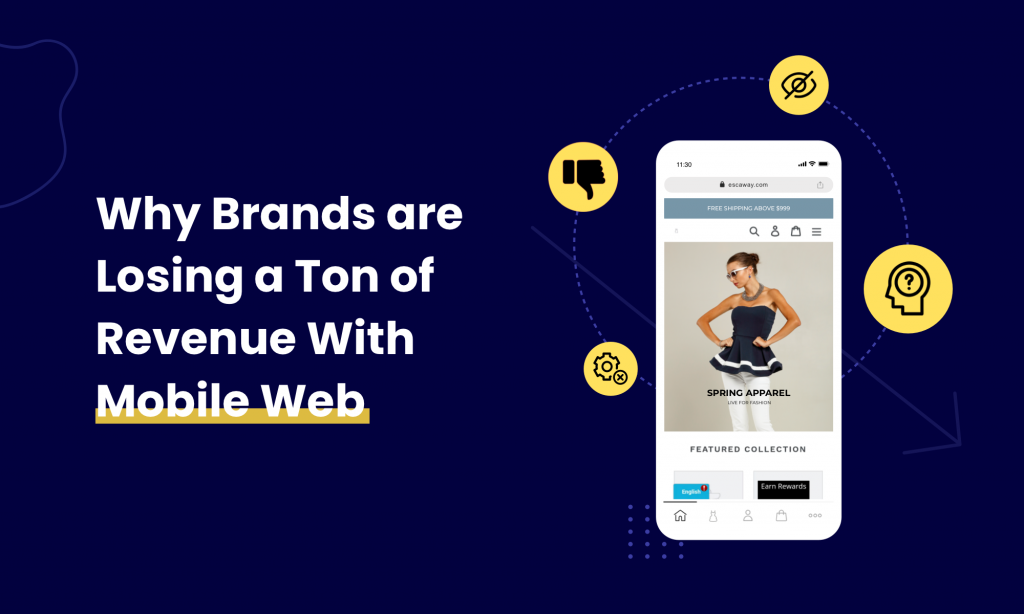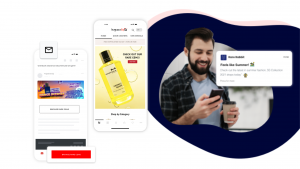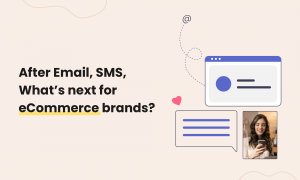Are you losing revenue with your mobile web strategy? You’re not alone. Many brands are still trying to figure out how to make the most of this fast-growing platform, and many are seeing disappointing results.
A recent study found that 75% of consumers who visit a brand’s website on their mobile device will leave if it is not mobile-friendly. That’s a lot of potential revenue that businesses are missing out on! So, if you’re one of the many business owners who still haven’t created a mobile-friendly site, now is the time to do so.
In this article, we’ll explore some of the reasons why brands are struggling with mobile web and share some tips on how to improve your strategy.

See? Your customers judge you for not having an app and move on to brands that have mobile shopping apps. You’d say, “We already have a world-class, mobile-responsive website that works perfectly fine.”
And to that, we say, “Good job; that’s necessary, but not enough.”
First off, are you allergic to money? Because if you aren’t, you’re actively keeping it away from your business in the form of up to 10x more conversions than a mobile app guarantees you.
And secondly, do you want your customers to stop bothering you with their purchases? Because the modern customer expects you to provide a seamless & frictionless shopping experience with an app and WILL move to a competitor if your mobile shopping experience is unsatisfactory.
Reason #1 that we mentioned should be reason enough to get an app, but in case of research numbers, customer surveys, and industry statistics don’t faze you, we’ll tell you real success stories of brands we’ve all heard of who saved from losing a ton of revenue because they only relied on the mobile web.
Once these brands built native mobile apps and invested in an expert-led mobile app commerce strategy, the results were ✨phenomenal✨
1. IKEA
The famous furniture brand knows that its online customers won’t convert unless they understand how a piece of furniture will look in their home. So, to make a significantly better online shopping experience, it launched a native mobile app that enabled customers to view products in their space virtually.
With a mobile app, the brand could use mobile device AR (Augmented Reality) capabilities and scale furniture based on a room’s dimensions.
IKEA’s mobile shopping app proved to be a hit among customers since they could see the textures of the products and how light and shadows would reflect off or appear on the piece of furniture.
IKEA’s website, in contrast, was ridden with poor layouts, overly dynamic product pages, and content that got lost among all the product categories. This made it practically impossible for customers to resume searches if they abandoned their search for a product on the website. Consequently, a large number of conversions were lost regularly.
2. Steve Madden
Steve Madden is one of the biggest online and offline fashion retailers globally. With a native mobile app, Steve Madden could skyrocket its conversion rate dramatically. The in-app conversion rate touched 10% compared to a meagre 2.5% on the mobile web.
3. Starbucks
The Starbucks app adds to its in-store experience and keeps customers returning to purchase with a superior shopping experience. The company knows that customers want more information about products without having to hold up lines or interact with a barista and place their orders fast and pay for them more quickly. This is exactly what the Starbucks app delivers. Customers browse & order products and pay for their drinks or food with the app, tip the barista, and identify the songs they hear in the Starbucks store to add to their Spotify playlists.
Why you are not getting enough conversions with mobile web
Shopify’s financial report (2019) shows that by the third quarter of 2019, a staggering 81% of traffic was coming from mobile devices.
When Shopify merchants approach us to get an app built and plan out an app success strategy, their primary concern is often capturing this high volume of traffic and potential leads that currently don’t translate to conversions and sales.
Today’s website-based buyer journey has too many cracks that purchases can slip through. You see, the modern customer’s buyer journey has a multitude of digital touch points. It is no longer a linear path from discovery to purchase.
Consumers have multiple channels for discovery, such as social media, targeted website ads, social proof & word of mouth, and more. There are various channels for purchase, but the most preferred one has been mobile apps for some time now. 57% of smartphone users prefer native mobile apps for shopping.
And so, if you’re sticking to a mobile responsive website, you’re actively choosing NOT to provide an optimal shopping experience.

What does your mobile shopping website lack?
To begin with, it’s the load time. You drop the ball as soon as you make your customer stare at a blank screen for more than 3 seconds.
Imagine this – if you had a storefront on a busy street, and a customer entered your store, would you ignore them for a few seconds and refuse to let them explore your store? Never, right?
This is what waiting for your favorite shopping website to load is like. Your customer base doesn’t have time to spend on mediocre browsing & surfing experiences and suboptimal shopping experiences.
Every second your Shopify page spends loading, you experience a 7% conversion loss. On a fundamental level, apps are native and hence faster than the mobile web – data transmission is as much as 10x lesser between a server and a mobile app than between a server and a browser, so native apps fetch data much faster than websites.
More importantly, apps offer more mobility and convenience and allow customers to pick up where they left off, with detailed buyer history and preferences that get saved on a mobile app. Shoppers that use mobile apps browse 286% more products and spend 18x more time in the app.
Why mobile apps are better than mobile web
Apps make for better shopping experiences by being fast, data-driven, highly engaging, and effective at customer retention.
As a plus, apps also enable customers to take advantage of phone-native features such as GBS-based personalization, AR (Augmented Reality) & VR (Virtual Reality), and live streaming.
Your mobile app keeps shoppers returning to your brand and drives repeat purchases.
Users have spent 49% more on these apps since January 2020, reaching nearly 18 million weekly hours in April 2021. One report from research and analytics firm Sensor Tower says that consumer spending on mobile apps and the number of app installs grew significantly during 2020, reaching $50.1 billion globally across the App Store and Google Play. This number has seen sustained growth as consumers continue to use apps as substitutes for their in-person behaviors, even as stores continue to open worldwide.
Here’s why customers want to shop on a mobile app
An app-based shopping experience is more personal, driven by the convenience of format and the sense of touch. Malls are not a thing of the past, but shopping online has come to replace them. Scrolling and tapping are like being in your favorite mall while waiting for something.
Many online consumers use shopping apps for entertainment, with no intention of purchase. However, 77% of those buyers end up buying in these apps.
Here’s why you want your customers to shop on a mobile app
Shopping on a mobile app with push notifications guarantees more engagement. The more knowledge you have about your customers, the higher your chances of increased retention and revenue.
More for you: Why brands like Shein, Nike, and Steve Madden have a mobile app
Here’s why you NEED a mobile app if you don’t want to lose money with just desktop and mobile web
– You’ll drive more conversions
Let’s say Steve from Sacramento is your typical customer. He walks through the maze of your website’s products and finally stumbles upon something he likes. He excitedly adds it to the cart and heads over to check out. But I didn’t check out thanks to side distractions into doing something else. Chances are, he’ll pick up where he left off later if he wants other, more convenient ways of shopping.
Now, if this were an app, Steve would have found what he was looking for much more accessible, added it to his cart, and checked out with that product or a couple of more products recommended to him based on a host of in-app interactions and buyer preference data you have on him, in just 5-8 seconds.
If he somehow still gets distracted and abandons his cart, you can reel him back in and maybe get him to spend some more time and money in your mobile app with highly effective abandoned cart and order tracking push notifications.
If checkout is not straightforward, quick, and painless, you’ll lose out on conversions from loyal customers like Steve.
– Your cart abandonment rate will drop drastically
Most Shopify merchants have disappointingly high rates of abandoned carts. The Baymard Institute says the average cart abandonment rate is 69.8% due to complex mobile web interfaces.
Abandoned cart push notifications convert 300% higher than abandoned cart email and SMS. With a native app, you get insights that enable you to run push notification campaigns for abandoned browsing and wishlists.
– You’ll boost retention rates and get those elusive repeat purchases regularly
Acquiring a new customer can cost five times more than retaining an existing customer. Carl Rivera, Shopify’s VP of Shop, stresses that lowering customer acquisition costs is critical for brands to stay afloat.
Increasing customer retention by just 5% can increase profits up to as much as 95%.
This is where mobile apps come in. Native apps empower you to personalize your communication to an impressive degree. Personalized push notifications help you build segmented journeys for different audiences based on customer behavior. These go a long way in customer retention.
The better, more personalized the shopping experience, the higher the number of lucrative repeat purchases. Merchants measure an app’s effectiveness by retention rate. Our clients saw roughly 30% of total revenue contribution through their app.
– You’ll have a high-performing owned sales & marketing channel
With mobile commerce on the rise, SMS and Push Notifications have taken over as dominant channels for conversion. Email still performs well with both desktop computers. Still, its performance is declining compared to other alternatives like Facebook Messenger.
In 2017 there were 1 billion people globally who had access to send a text message. And these numbers are expected to grow further, reaching 2 billion people!! That means more potential customers right here under your nose.
Push notifications outperform email and SMS among a brand’s owned marketing channels with significantly higher click and conversion rates.
Read More: Email vs. SMS vs. Mobile App Push Notifications – what’s better for e-commerce brands?
Personalized push notifications help you build segmented journeys for different audiences based on customer behavior.
An app’s engagement rate is 88% higher with push notifications. The cost to develop a native app is tremendously low, with the average return on investment being 30%.
We’ve seen 3x – 20x higher conversions on mobile apps than on the web. Don’t you want to be a part of such a success story too?
Ready to experience the power of a native mobile app yourself?





Share Your Views!